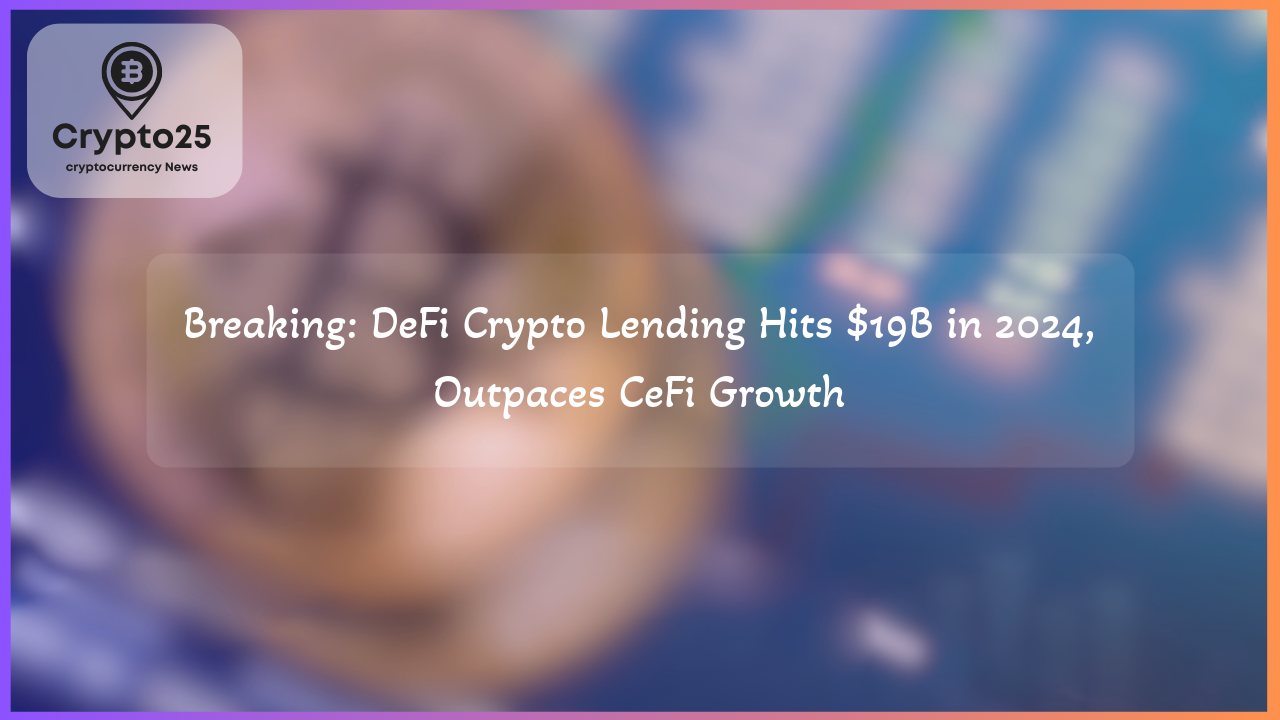
The crypto lending industry is undergoing significant transformation, fueled by shifts in institutional involvement and the rising dominance of decentralized platforms. A recent report by Galaxy highlights pivotal trends that underscore the contrasting dynamics between centralized finance (CeFi) and decentralized finance (DeFi). As crypto adoption grows globally, lending ecosystems are becoming vital components of the financial infrastructure driving this evolution.
## Tether and CeFi Dominate Traditional Crypto Lending
The Galaxy report reveals that the crypto lending market was valued at $30 billion as of December 31, 2024, excluding collateralized debt position (CDP) stablecoins. This approach paints a more accurate picture of CeFi’s market activity, avoiding the potential double-counting caused by overlap with CDP stablecoins. Centralized finance lenders, like Tether, Galaxy, and Ledn, commanded a significant portion of this market, representing 88.6% of CeFi’s total loan book—amounting to $9.9 billion or 27% of the total crypto lending market when CDP stablecoins are included.
However, the broader market size of $36.5 billion marks a substantial contraction of 43% from its peak of $64.4 billion in late 2021. This decline stems largely from reduced borrower demand and the high-profile collapses of several lenders between 2022 and 2023. Despite this downturn, CeFi remains a key player in institutional lending, offering structured services to accredited investors.
CeFi’s offerings are divided into three core categories: over-the-counter (OTC) lending, prime brokerage, and on-chain private credit solutions. These cater specifically to institutional borrowers by delivering customizable terms such as flexible collateral structures and tailored loan maturity dates. OTC loans, in particular, appeal to investors seeking bespoke agreements, while prime brokerages focus on narrower asset categories like exchange-traded products. On-chain private credit, a newer entrant, bridges off-chain agreements with tokenized capital for hybrid lending models.
Nevertheless, trust in CeFi institutions, especially among retail participants, has eroded significantly due to elevated counterparty risk. Following a series of bankruptcies, including those of prominent platforms, users have started gravitating toward alternative ecosystems like DeFi.
## DeFi Lending Surges Amid Institutional Slowdown
In stark contrast, decentralized finance protocols have seen remarkable growth, with open borrows surging to $19.1 billion in Q4 2024—a 959% jump from the $1.8 billion recorded in late 2022. This meteoric rise reflects a growing preference for permissionless financial platforms that enable users to lend and borrow directly via blockchain-based smart contracts, eliminating intermediaries.
Leading DeFi platforms like Aave and Compound, as well as emerging cross-chain lending utilities, are experiencing surging user adoption. They offer unparalleled transparency, automated liquidation processes, and adaptive lending rates, creating a trust-minimized and scalable lending environment. DeFi protocols also benefit from modular architectures, allowing projects to evolve quickly to meet user demands and risk assessments across diverse assets.
Key drivers behind DeFi’s growth include the deployment of capital across multiple chain ecosystems and the emergence of specialized lending platforms integrating innovative features. These platforms have proven their resilience, maintaining operational stability even during volatile market cycles. Such performance underscores why DeFi lending is becoming increasingly attractive, particularly for those disenchanted by CeFi’s shortcomings.
The strength of DeFi lies in its ability to enforce transparency and its permissionless nature, which allows global users to access credit markets efficiently. These structural advantages reflect a deeper shift in the crypto economy, as capital increasingly pivots toward decentralized solutions.
## Comparing CeFi and DeFi: Where the Market Stands
The report underlines the coexistence of CeFi and DeFi while highlighting crucial divergences. CeFi, backed by institutions like Tether, remains pivotal for serving the needs of large-scale borrowers. It continues to hold its place as the dominant choice for institutions seeking bespoke lending options.
DeFi, meanwhile, represents the future of trust-minimized capital deployment. Its rapid adoption is signaling a long-term realignment in lending frameworks, driven by lower fees, operational transparency, and automated protocols. For retail and institutional players alike, DeFi offers unique advantages that centralized systems often fail to provide.
| Title | Details |
|---|---|
| Market Cap | $36.5 Billion |
| DeFi Lending Growth | +959% Since 2022 |
| CeFi Loan Share | 88.6% of CeFi Lending by Top 3 Providers |
Both CeFi and DeFi maintain key positions in the crypto lending ecosystem, but their trajectories highlight diverging priorities. CeFi focuses on structured products and institutional borrowing, while DeFi emphasizes accessibility, trust, and innovation. Together, they offer unique value to the crypto economy, catering to both traditional financial institutions and the decentralized, global user base shaping the future of digital currencies.
